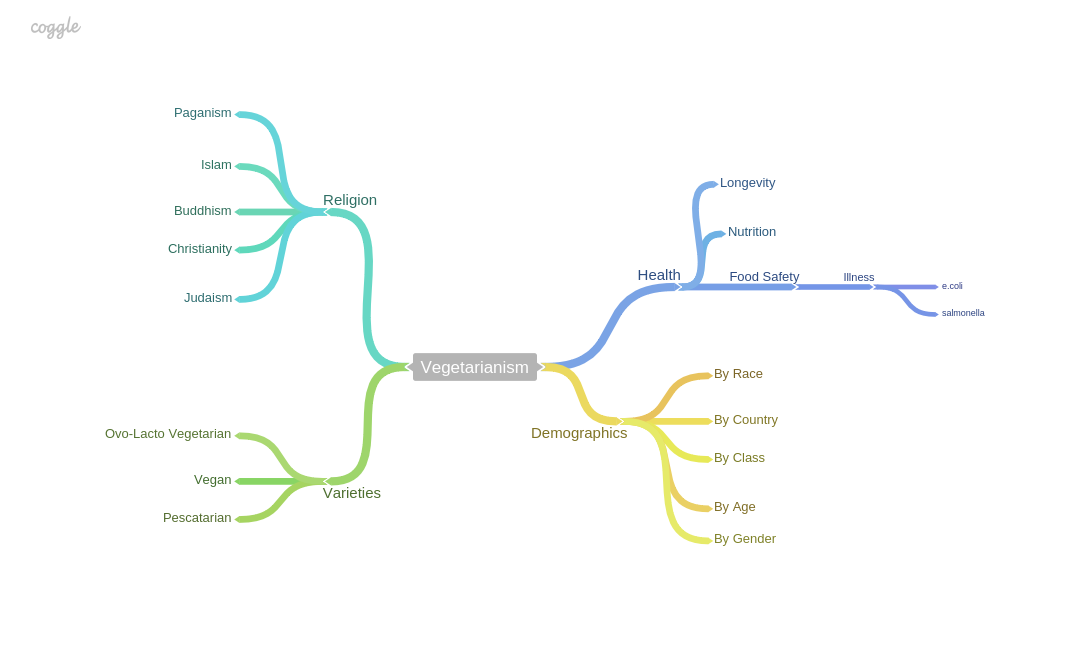Concept Mapping
Writing, especially research, involves two separate skills: analysis (taking ideas apart) and synthesis (putting ideas together). Your thesis and essay should be a result of these two tasks. Concept mapping, or mind mapping, can help.
The Purpose of Concept Mapping
Concept mapping is a smart way to begin the writing process. It can:
- help you graphically represent and organize ideas
- show how those ideas are related to each other
- help you translate your topic into a manageable thesis
- generate questions and search terms to focus your research
Steps
- Write the main topic in the center of the page and draw a circle around it.
- Brainstorm ideas for the topic. Try breaking the topic down into smaller categories, such as who, what, where, why, how, etc?
- Take a closer look and identify specific subtopics for each category. These can become keywords and search terms for your research.
- Identify the relationships between the concepts you’ve identified.
- See if all the pieces fit together and if anything is missing.
- Generate a list of questions for the topic.
Example
-
-
- Vegetarianism
- Health
- Food Safety, Nutrition, Longevity
- All seem beneficial
- Illness? Raw vegetables? E.coli?
- Are vegetarians more or less likely to get foodborne illnesses, like e.coli, than others?
-
Tools to Help
- https://bubbl.us
- Coggle (via Google)
- Lucidchart (via Google)
- MS Word SmartArt

Kaylan| 2019
This work is licensed under the Creative Commons Attribution-NonCommercial-ShareAlike 4.0 International License. To view a copy of this license, visit http://creativecommons.org/licenses/by-nc-sa/4.0/.